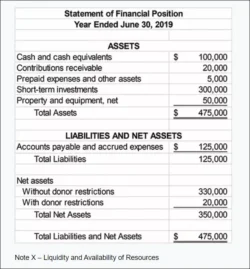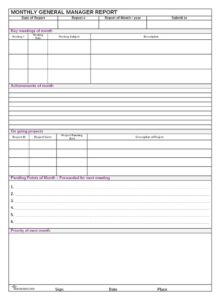Serving as a pastor is a deeply rewarding calling, yet it often comes with a multifaceted role that extends far beyond Sunday sermons. From pastoral care and community outreach to administrative tasks and spiritual leadership, the responsibilities are extensive and varied. Keeping track of all these activities, progress, and challenges can feel like a monumental task, especially when you are also focused on the spiritual well-being of your congregation.
This is where a structured approach to reporting becomes incredibly valuable. It isn’t just about accountability; it’s about providing a clear snapshot of your ministry’s health, celebrating victories, identifying areas for growth, and ensuring transparent communication with your church leadership or board. Without a consistent method, important details can be overlooked, and efforts might not be recognized.

Imagine having a clear, organized document that not only summarizes your month’s activities but also helps you reflect on your ministry’s impact. A well-designed pastor’s monthly report template can transform this often-dreaded task into an insightful practice, making it easier to articulate your contributions and guide future initiatives. It serves as an invaluable tool for both personal reflection and organizational clarity, benefiting not just you, but the entire church community.
What Should Your Pastor’s Monthly Report Cover?
Crafting an effective pastor’s monthly report template requires careful consideration of all aspects of pastoral ministry. It’s not just a checklist; it’s a narrative of your dedication, your challenges, and your triumphs. A comprehensive template should allow for both quantitative data and qualitative reflections, providing a holistic view of your work. Think about the key areas that define your role and the information your leadership needs to understand the pulse of the church.
One of the primary sections should naturally focus on your spiritual leadership and teaching ministry. This involves more than just listing sermon titles. It’s about reflecting on attendance trends, the themes explored, and any specific feedback or spiritual growth observed within the congregation. Did you initiate a new Bible study? Were there particular moments of spiritual breakthrough during services? These are the insights that bring numbers to life.
Pastoral care is another cornerstone of your ministry that needs dedicated attention. This includes hospital visits, counseling sessions, crisis interventions, and follow-ups with new members or those experiencing difficult life events. While maintaining confidentiality is paramount, a report can still indicate the volume and general nature of these interactions, demonstrating the breadth of care provided to the flock. It helps leadership understand the significant emotional and time investment in nurturing the congregation.
Beyond the direct ministry to individuals, a good report will also encompass administrative and organizational duties. This might involve staff meetings, budget oversight, facility management concerns, or planning for upcoming events. These are often unseen but critical tasks that keep the church functioning smoothly. Detailing these efforts ensures that the significant time spent on governance and logistics is recognized and appreciated by those you serve alongside.
Finally, community engagement and outreach efforts are vital for the church’s external impact. Were there specific initiatives to connect with the local neighborhood? Did you represent the church at community events? These actions highlight the church’s role beyond its four walls. Including a section on personal development, such as conferences attended or books read, also shows your commitment to continuous growth and improvement as a leader.
Key Areas for Reflection and Reporting
- Worship and Teaching Ministry: Number of services led, sermon topics, attendance trends, special guest speakers, new initiatives.
- Pastoral Care: Hospital visits, counseling sessions, baptisms, funerals, weddings, new member contacts, follow-ups.
- Leadership and Administration: Staff meetings, board meetings, committee oversight, budget reviews, facility concerns, volunteer coordination.
- Community Engagement and Outreach: Local events attended, specific outreach programs, partnerships with other organizations.
- Personal and Professional Development: Conferences, workshops, theological studies, personal spiritual retreats, books read.
- Challenges and Prayer Requests: Obstacles faced, specific needs within the congregation or community, personal prayer items.
Benefits of a Structured Reporting System
Implementing a consistent pastor’s monthly report template offers far more than just fulfilling an administrative requirement; it fundamentally enhances the effectiveness and transparency of your ministry. For the pastor, it provides a dedicated time for reflection, allowing you to pause amidst the busyness and critically assess your efforts and their impact. This regular self-evaluation is crucial for identifying areas of strength to build upon, and equally important, areas that might need more attention or a different approach.
For the church leadership, a structured report becomes an invaluable communication tool. It fosters accountability, not in a punitive sense, but as a means of shared understanding and support. Leadership can gain a clear picture of the pastor’s workload, the spiritual health of the congregation, and the progress of various church initiatives. This transparency builds trust and facilitates more informed decision-making, ensuring that the entire church body is aligned with its mission and vision.
Furthermore, these reports create a valuable historical record. Over time, a collection of monthly reports paints a comprehensive picture of the church’s journey, highlighting trends, successes, and challenges through different seasons. This data can be incredibly useful for long-term strategic planning, for training future leaders, or even for celebrating milestones. It provides a tangible legacy of ministry, documenting the dedication and hard work invested in the spiritual growth and community impact of the church.
Adopting a regular reporting rhythm helps streamline communication within the church’s leadership structure. Instead of impromptu discussions or fragmented updates, everyone receives a consistent, comprehensive overview of the month’s activities and their broader implications. This promotes a more unified vision and a stronger sense of shared purpose among those guiding the church forward. It’s a proactive step towards clearer communication and more effective collaboration for the spiritual well-being of the entire community.
Embracing a systematic approach to detailing your monthly activities and reflections offers profound advantages for both individual pastors and their congregations. It’s a powerful tool for clarity, accountability, and strategic growth. By consistently using a well-designed template, you not only fulfill an administrative need but also cultivate a deeper understanding of your ministry’s trajectory and impact. This practice becomes an integral part of effective leadership, fostering greater transparency and trust within the church community, and ultimately, strengthening the ministry as a whole.



